 |
firm active: 1907-1921 minneapolis, minnesota :: chicago, illinois |
|
A Brief Introduction The material displayed here represents work by William Gray Purcell (1880-1965) and George Grant Elmslie (1869-1952), partners in an architectural firm dedicated to the vision of an independent and proud American archiscape. Part of a design movement during the early decades of the 20th century known as "Prairie" or more generally as "progressive" architects, Purcell and Elmslie joined with like-minded office associates, artists, craftspeople, and clients to create buildings that were honest and unique expressions of the American spirit of democracy. Examples of their outstanding accomplishments are displayed here in a mixture of archival source materials (drawings, manuscripts, and illustrations), as well as modern commentary and recent photographs of surviving buildings and objects.These web pages are intended to be a research resource for students and aficionados of organic understanding in architectural expression, combining original documentation in a mix of image and text, together with later photography and commentary. The representative samples here are meant to entice to further, perhaps original discovery. Go out and find the living objects, such as they survive. That's the only way these words and images will ever grow to be more than merely intellectual beauty. Site last updated September 15, 2015: This web site consists of over 2,275 HTML pages that are presently undergoing reformat to implement a fresher design aesthetic, correct obsolesced links, and add new materials. Some pages may be slower than others to be rehabilitated. This content of site has been served in growing form since 1994 (21 years!); the organica.org domain name was instituted in 2001. |
Main Menu
Selected Works of Purcell & Elmslie, Architects

Charles A. Purcell residence River Forest, Illinois 1909 |
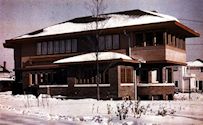 E. L. Powers residence Minneapolis, Minnesota 1910 |
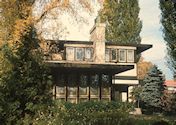 Edna S. Purcell residence Minneapolis, Minnesota 1913 |
||
Hearth and home were the most frequently happening place for P&E, from small open plan houses built for Joe Citizen to large estates for wealthy clients--and lots, so to speak, in between. |
||||
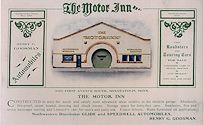
Motor Inn Garage Minneapolis, Minnesota 1908 |
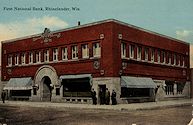 First National Bank Rhinelander, Wisconsin 1910 |
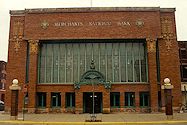 Merchants Bank Winona, Minnesota 1912 |
||
This category includes banks, office buildings and interiors, stores, factory designs, business garages, and hotels. Except for the banks much of the commercial work of the firm has vanished. Their most honored series of commercial commissions, the Edison Shops, are long gone, as are the exquisite Alexander Brothers Executive Offices. |
||||
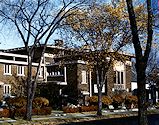
Stewart Memorial Church Minneapolis, Minnesota 1909 |
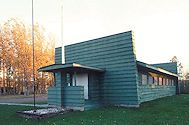 Town Hall Jump River, Wisconsin 1915 |
 Municipal Building Kasson, Minnesota 1916 |
||
Here find the churches and their community spaces, town halls, libraries and schools (all unbuilt), theaters, pavilions, and monuments, plus the magnificent Woodbury County Court House, the only major public building erected in the progressive idiom. There's even a YMCA for Hunan province, China, and of course the Australian Federal Parliament Building designs. |
||||
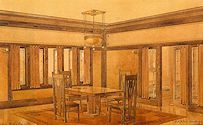
E. L. Powers residence Dining room rendering 1910 Gustav Weber, delineator |
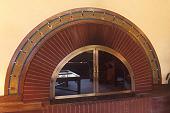 John Adair residence Fireplace mosaic Owatonna, Minnesota 1913 |
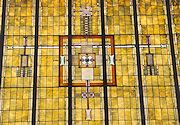 Merchants Bank Leaded glass Winona, Minnesota 1912 |
||
This section includes furniture, terra-cotta, leaded glass, sawed wood, textiles, mosaics, stencils, metalwork, electric fixtures, and all the other bits and pieces required to complete the idea of a building. |
||||
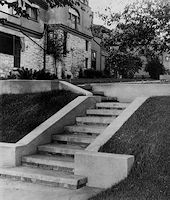
Catherine Gray residence Front steps Minneapolis, Minnesota 1907 |
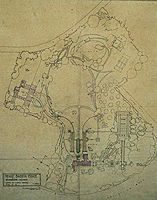 Henry Babson estate Landscaping plan Riverside, Illinois 1914 |
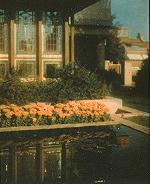 Edna S. Purcell residence Reflecting pool Minneapolis, Minnesota 1913 |
||
Growing things were the icing on the cake in an organic building, and alas the most ephemeral. |
||||
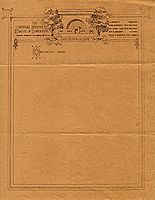
Farmers National Bank Stationery |
 Purcell & Elmslie Advertising brochure 1916 |
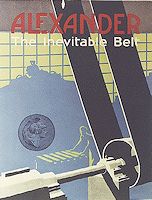 Alexander Brothers Advertising poster 1916 |
||
The encounter with idea of the idea also deserved proper representation, and the many graphic devices produced included stationery, advertising, and even magazine layouts. |
||||
A Deeper Look: Purcell & Elmslie, Architects
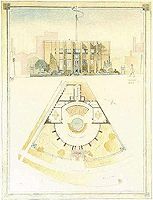
Gusto Cigarette Company, project Minneapolis, Minnesota 1914 |
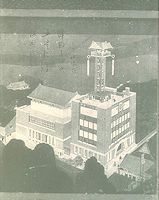 YMCA, project Siang Tan, Hunan, China 1916 |
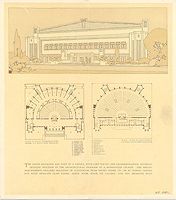 Christian Science Church, project Minneapolis, Minnesota 1914 |
||
The work of the firm as seen through the original accounting system. Many jobs not visible through the Selected Works pages can be found here, although most are projects with limited imagery and some of the citations contain reference only to later notes or brief commentaries by Purcell, not direct documentation of the work. |
||||
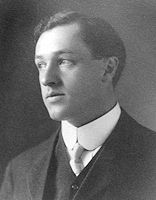
William Gray Purcell Circa 1910 |
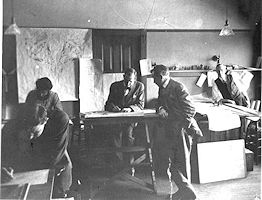 Office of Purcell, Feick and Elmslie Minneapolis, Minnesota 1912 |
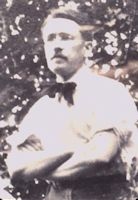 George Elmsie Circa 1913 |
||
Everyone who made it happen received recognition in the P&E office, meaning the drafters, office staff, contractors, artists, and craftsmen as well as the architects. This was a highly unusual democratic practice among practitioners of the day. |
||||
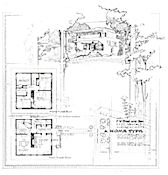
F. W. Bird Competition, 1908 |
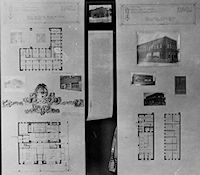 Cornell Exhibition Display boards 1912 |
 Minnesota State Art Commission Competition, 1914 |
||
The practice of architecture relies on getting your message out there, at least when an architect has one. Even today, competitions and exhibitions sponsored by professional organizations, product manufacturers, and even museums are the main venue for peer review and subsequent publicity (not least of which is the privilege of saying you won an award). Back in the 1910s, such opportunities--and they were pretty much the same--were even more important in getting across the progressive message--and occasionally seeing who was best among the pure and good. |
||||
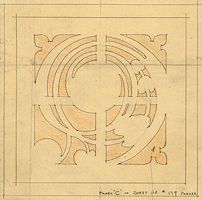
Charles Parker residence Minneapolis, Minnesota 1912 |
 John Leuthold residence Saint Paul, Minnesota 1911 |
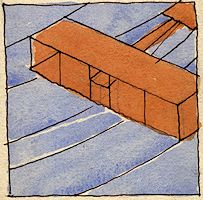 George W. Stricker residence, alterations Minneapolis, Minnesota 1910 |
||
In an effort to assist researchers not affiliated with the dark side, these catalogs present the original drawings for decorative elements such as sawed wood, leaded glass, terracotta, light fixtures, and stencils in one reference set. Carpe caveat. |
||||

The Western Architect, 1913 |
 The Minnesotan magazine, April, 1916 |
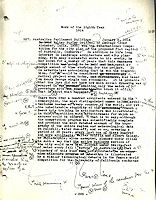 Parabiographies manuscript page, ca. 1930s |
||
A prolific writer, William Gray Purcell left a massive body of manuscripts articulating the work of the firm, their design intentions, and the experience of getting through the work. In particular, Purcell developed a commission-by-commission account of Purcell & Elmslie, Architects, that he called the Parabiographies. Also available here are the contents of the three Western Architect issues (1913, 1915) showcasing P&E design; writings by George Grant Elmslie; and selected publications from the era. |
||||

The Acropolis, 1906 |
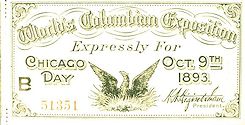 World's Columbian Exposition ticket, or, Be Ancient Now |
 Court of [dis]Honor World's Columbian Exposition, 1893 |
||
The pictures above reveal at a glance the organic argument, leaving only the details of who said what to whom. When completed, this section will offer an overview of various narratives that make the organic greater than the sum of the parts. Starting with the poetic insight of the Transcendentalists, through the evolution of "fourth dimensional consciousness," the World's Columbian Exposition, and evolving modes of architectural education, the timestream flows over the course of a century from 1820-1920. Purcell and Elmslie epitomize the essential practical outcome of the philosophical journey. |
||||
Your feedback and contributions are greatly appreciated. E-mail to organicus "at" gmail.com.